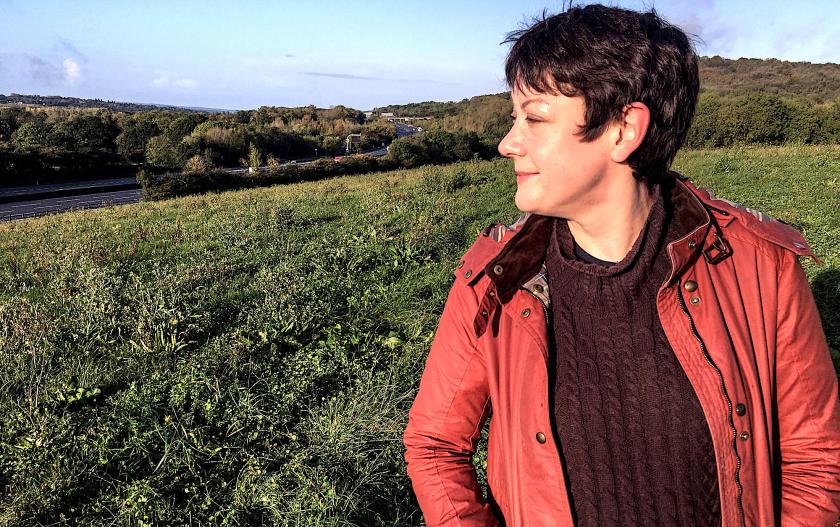The nightmarishness of the M25 motorway is well known, especially if you get stuck on the Heathrow section on a wet Sunday night, but as she perambulated around the motorway’s circumference for this idiosyncratic BBC Four documentary, naturalist Helen Macdonald showed us how skilfully nature deals with man-made monstrosities. For instance, an international cast of aerial predators and exotic waterfowl has made itself at home in the rubbish-strewn Rainham marshes, while great tits have modulated their calls upwards to make them audible above the booming traffic.
In this languid 90-minute film – would it have got so much space without the virus-induced production drought? – Macdonald delivered a philosophical essay about art, history, science and evolution. She didn’t quote William Blake’s lines about seeing the world in a blade of grass, but she did give us some remarkable insights into the strange power of “neurospora” fungi, found alongside the motorway. Its spindly, anemone-like limbs provide pathways down which nuclei can travel, finding ingenious ways to re-route themselves around blockages and obstacles. Scientists are examining its adaptive abilities as a possible model for controlling traffic flow. Intriguingly, in the "Greater London Plan" from 1944, a redesign project for post-World War Two London, the proposed new network of ring-roads had a strikingly neurospora-like look to it. Even then, Nimbys complained about it.
 Macdonald’s imagination roamed unchecked. It took in JG Ballard’s novel Concrete Island (about an architect stranded on derelict land between motorways), Joseph Conrad’s Heart of Darkness, and the idyllic paintings by Samuel Palmer of the Darent Valley in Kent, which helped to save the village of Shoreham from the M25 bulldozers (pictured above, Palmer's The Golden Valley). She introduced us to such mini-marvels as the chalk stream running under the motorway near Rickmansworth (“one of the rarest ecosystems on earth”), and went into a strange rapturous state about a junction of canal, railway and motorway overpass on the River Wey. Somehow, the graffiti’d slabs of concrete reminded her of “ancient Islamic paradise gardens… designed for contemplation and spiritual renewal.” It looked more like a crime scene from Unforgotten to me, but it takes all sorts. This film radiated an entrancing aura, even if it could have lost a few shaggy bits in the edit suite.
Macdonald’s imagination roamed unchecked. It took in JG Ballard’s novel Concrete Island (about an architect stranded on derelict land between motorways), Joseph Conrad’s Heart of Darkness, and the idyllic paintings by Samuel Palmer of the Darent Valley in Kent, which helped to save the village of Shoreham from the M25 bulldozers (pictured above, Palmer's The Golden Valley). She introduced us to such mini-marvels as the chalk stream running under the motorway near Rickmansworth (“one of the rarest ecosystems on earth”), and went into a strange rapturous state about a junction of canal, railway and motorway overpass on the River Wey. Somehow, the graffiti’d slabs of concrete reminded her of “ancient Islamic paradise gardens… designed for contemplation and spiritual renewal.” It looked more like a crime scene from Unforgotten to me, but it takes all sorts. This film radiated an entrancing aura, even if it could have lost a few shaggy bits in the edit suite.















Add comment